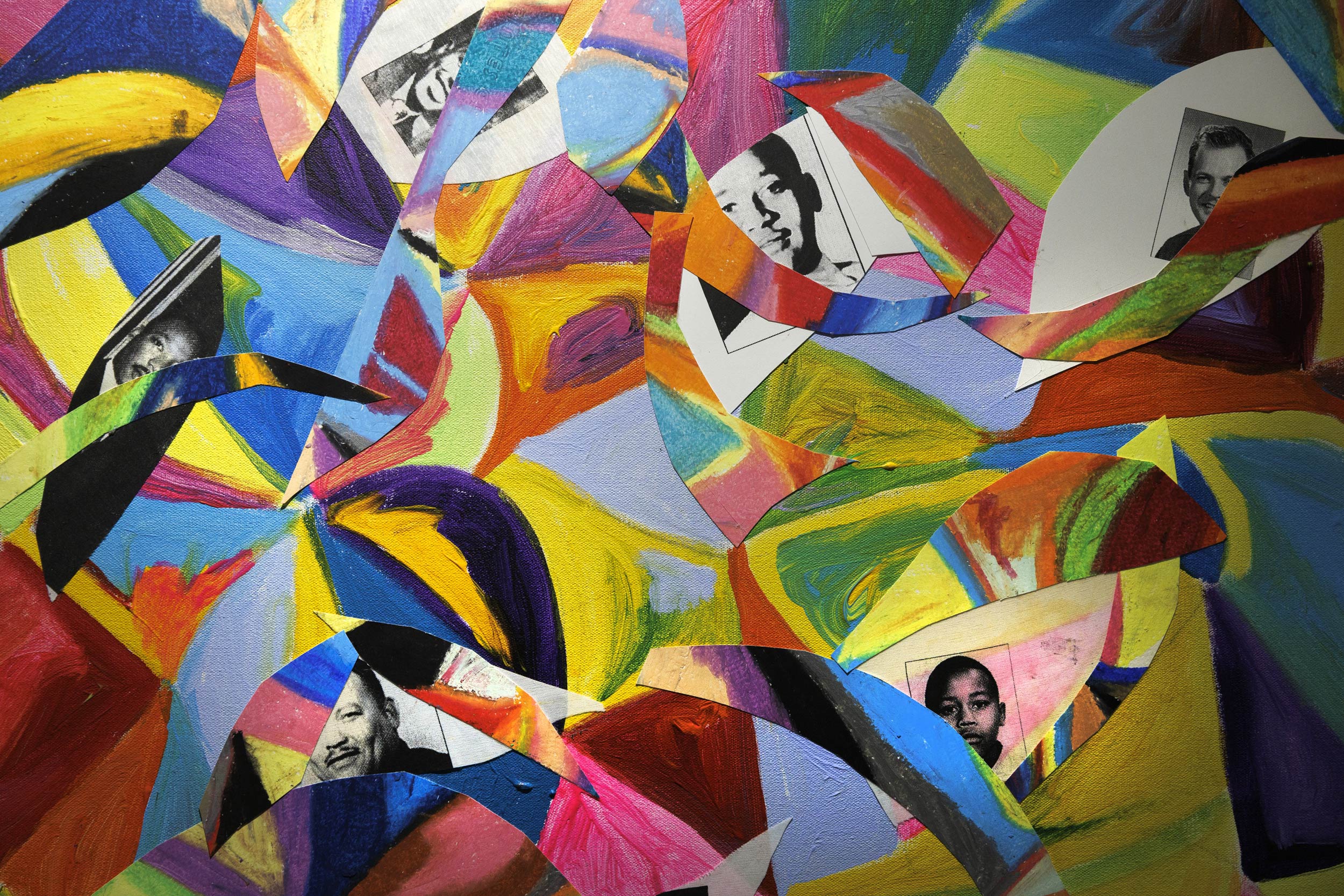While researching voter suppression and the Civil Rights Movement, artist Lisa Jones Gentry came across a story published by the Southern Poverty Law Institute. The news post highlighted 40 people who were murdered between 1954 and 1968, among them activists, victims of vigilantes, and ordinary citizens. The names inspired Gentry to create a piece of mixed media artwork to honor those lives.
“They Died for You: Vote 2024” features the faces of these men, women, and children concealed among brightly colored geometric shapes. The piece, and another Gentry created in 2020, sit in a new exhibition titled “Vote!” highlighting African American voting history at the Neil L. and Angelica Zander Rudenstine Gallery in the Hutchins Center for African & African American Research.
“They were really just ordinary people whose lives had been cut short because they were trying to make sure that this country was free for everyone,” said Gentry, a graduate of Harvard College and Harvard Law School.
“Vote!” showcases key figures who historically defined civic participation as their community struggled for equal voting rights. Works by Gentry, Haili Francis, A.L.M. ’18, Titus Kaphar, and others are on display along with selections from the Hutchins Center’s permanent collection, including Jules R. Arthur, Ray A. Frieden ’65, Charles W. White, and Rico Gatson.
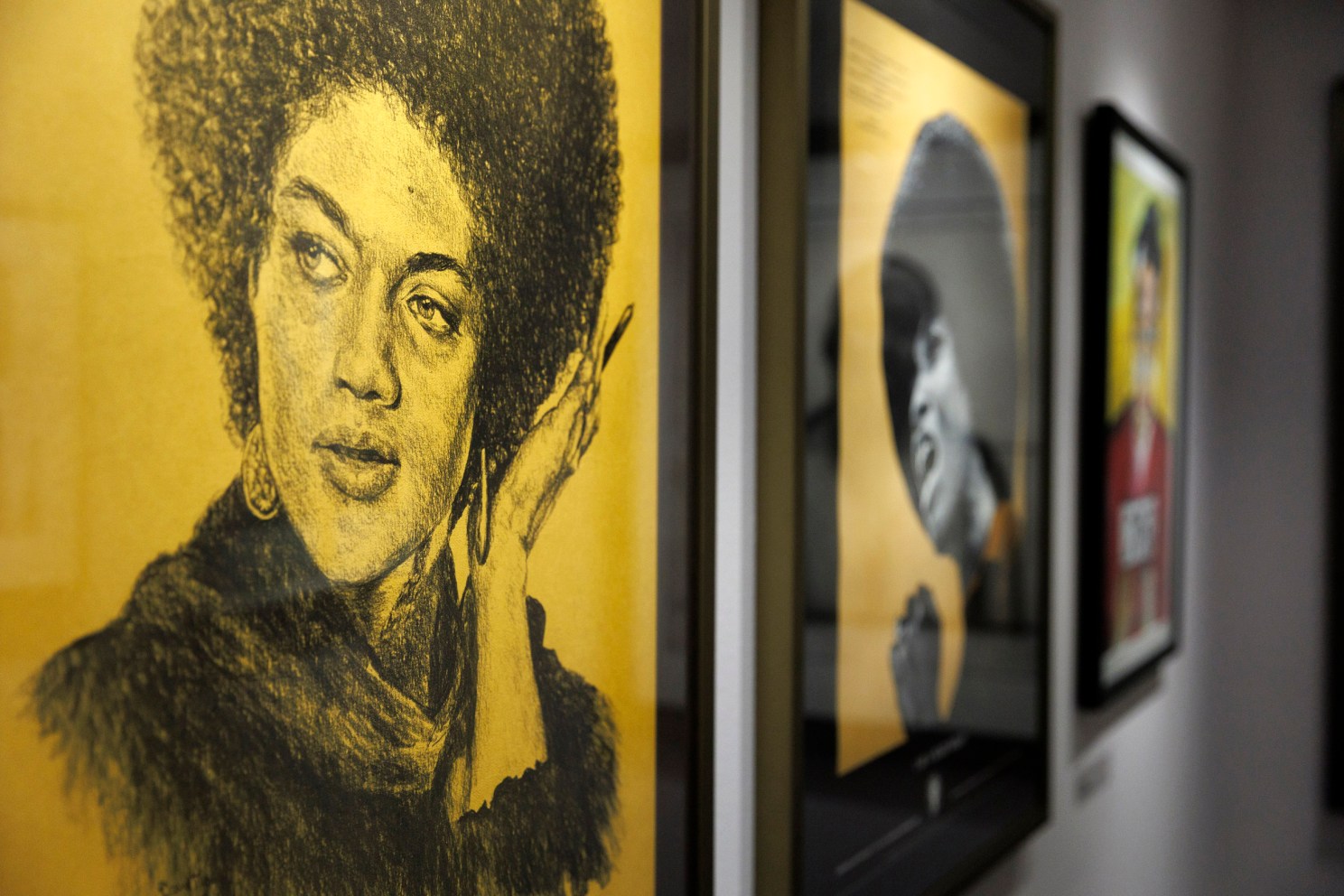
A detail of “Kathleen Cleaver,” 1969, by David Mosley

A detail of “Shirley Chisholm: Unsought,” 2024, by Haili Francis, A.L.M. ’18.
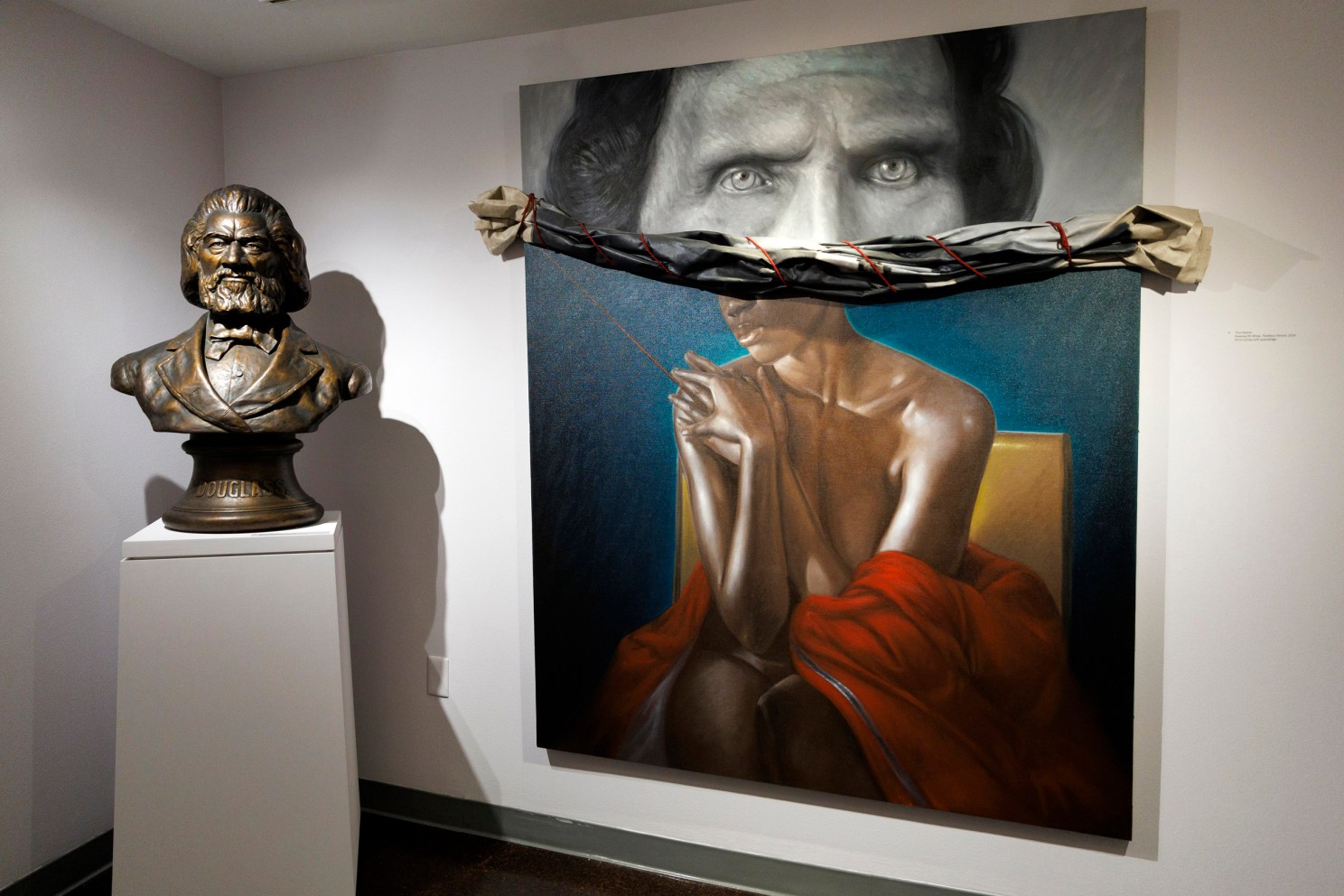
Bust of Frederick Douglass, 1919, by Isaac S. Hathaway (left) and “Drawing the Blinds, Thaddeus Stevens,” 2014, by Titus Kaphar.
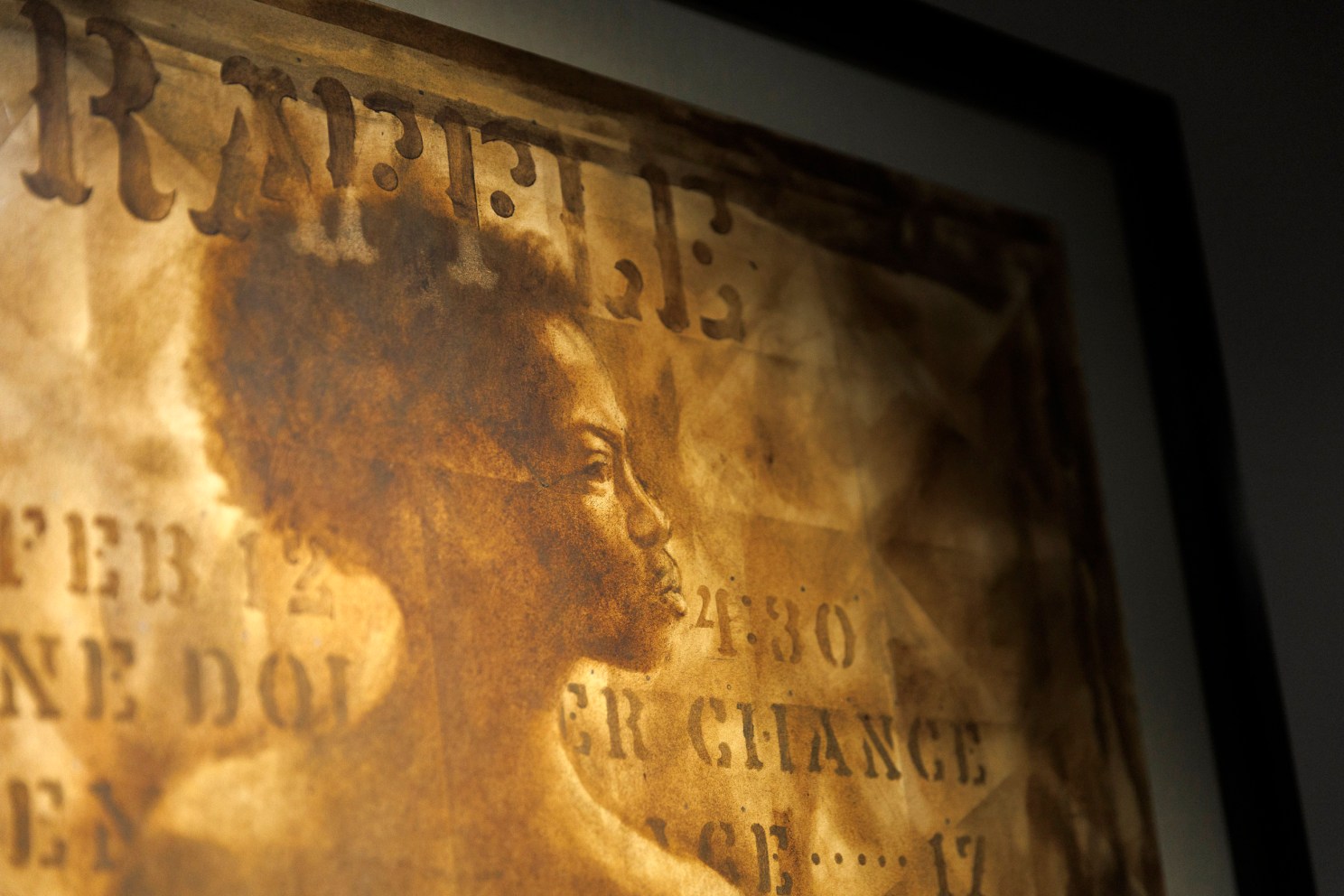
A detail of “Raffle,” 1970, from the “Wanted” series by Charles W. White.
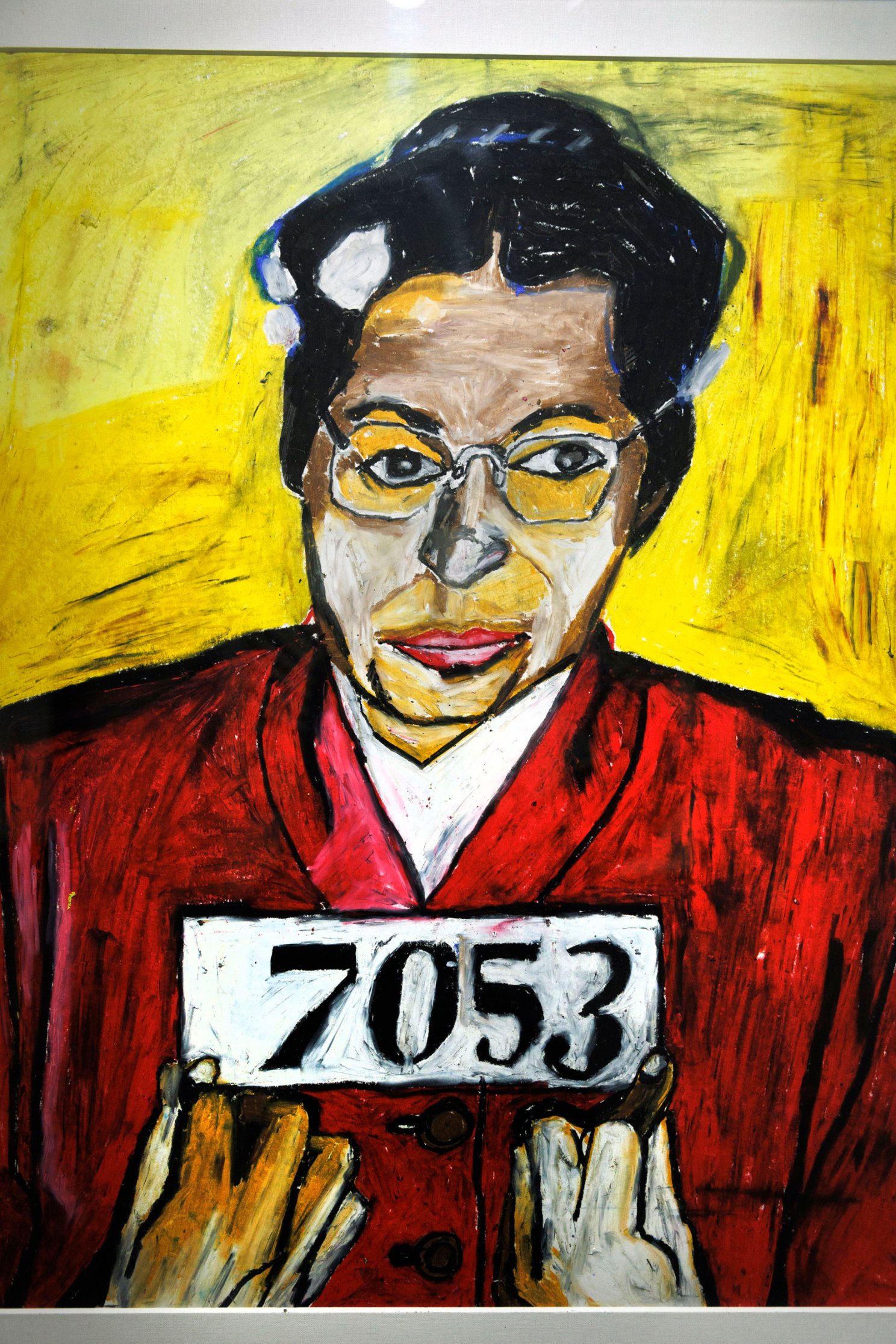
A detail of “Rosa Parks,” 2011, by James “Jamie” Roux.
Curator Dell Marie Hamilton, acting director of the Cooper Gallery for African & African American Art at the Hutchins Center, said she is intrigued by undecided voters and said she hopes the exhibition can show them the long road Black Americans have traveled to gain and protect their right to vote.
“This is a very long trajectory that doesn’t just happen. We, as civic participants, are part of this history as well,” she said. “For those folks who are perhaps still struggling with whether or not this is even a system worth saving, I would hope that an exhibition like this gives them some of the fuel they need to understand that this is the history that we’re wrestling with. This is the aftermath of why we are where we are. I feel like you can’t know the present or the future without really understanding the history.”
From the beginning, visitors are confronted with the U.S.’ violent and shameful past with enslavement. Kaphar’s “Drawing the Blinds, Thaddeus Stevens” is an oil on canvas featuring the abolitionist and American lawyer and a seated Black woman — a hint at Stevens’ relationship with Lydia Hamilton Smith, a mixed-race, born-free housekeeper, businesswoman, and abolitionist. The piece is displayed next to “Raffle,” a piece developed by Charles W. White in 1970 that was inspired by advertisements promoting slave auctions. “Raffle” is an oil wash on illustration board in shades of brown, featuring an enslaved Black woman who appears to be pregnant.

Two works by Francis, an alumna of the Harvard Extension School who helped plan a Harvard Black Alumni Society’s Global Change Makers Conference, which inspired the exhibition, are also displayed.
“As an artist, my role is to simply bring attention to something that can spark a larger conversation,” said Francis, an artist and scholar working at the Smithsonian National Museum of African American History and Culture. “I believe that when we use art [we can] catalyze these conversations that can be difficult to have in other areas.”
One of Francis’ pieces, “Sidney Revels Redmond,” showcases the legacy of Redmond, a fellow alum (1923, HLS 1925), the grandson of the first Black senator, and a civil rights attorney in his own right. Francis’ second piece, “Shirley Chisholm: Unbought,” pays homage to the first Black woman elected to the House of Representatives and the first Black woman to run for president.
“My hope is that people understand that voting is powerful,” she said. “They do have a voice, even though sometimes they can get discouraged when the outcome doesn’t necessarily look like it’s going in a direction that feels fair or right.”
“Vote!” runs until Dec. 7, and is co-sponsored by the Harvard Black Alumni Society, the Harvard Alumni Association, and Harvard’s Hutchins Center for African & African American Research.
Source link

